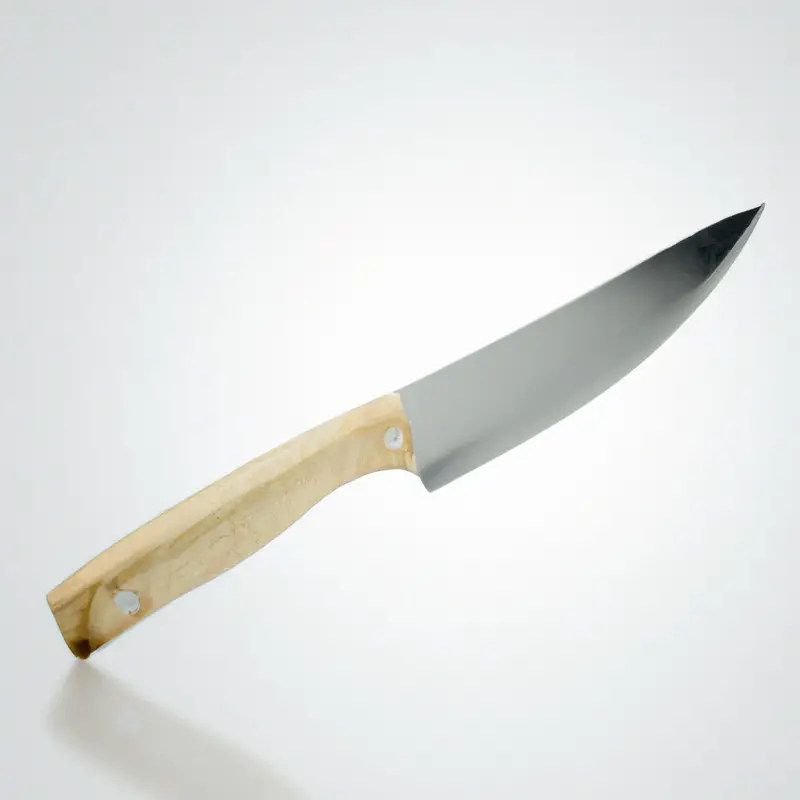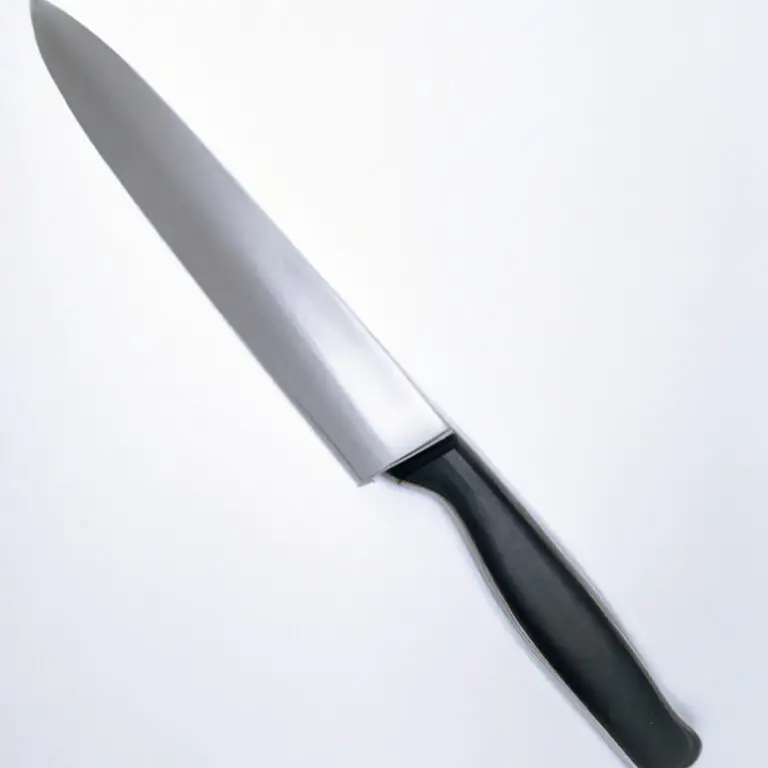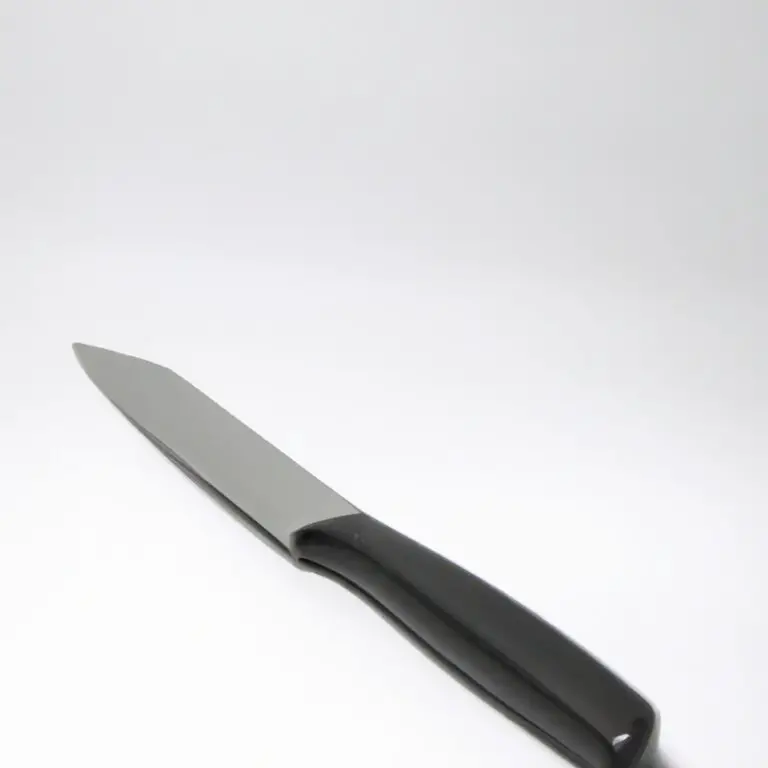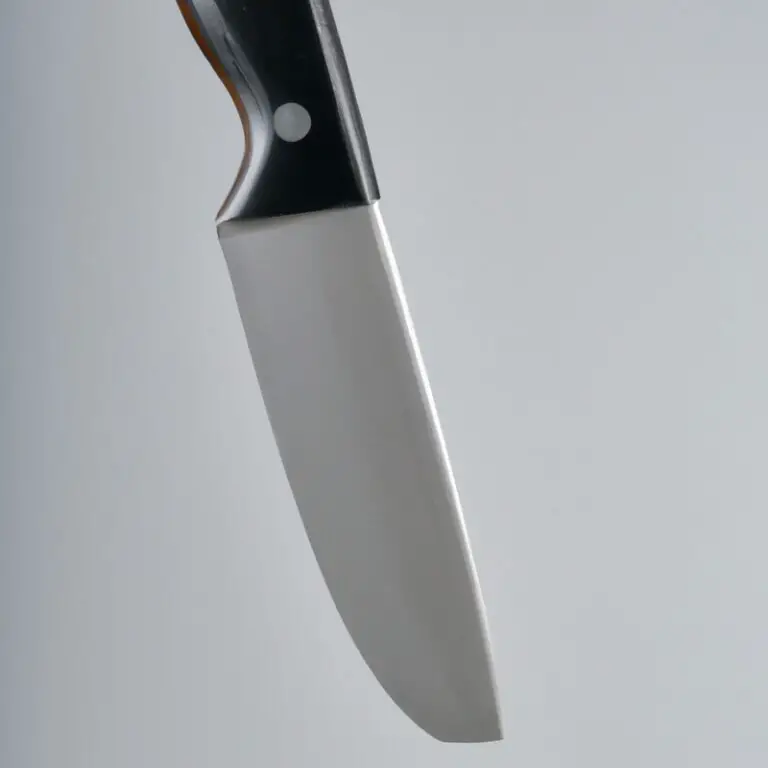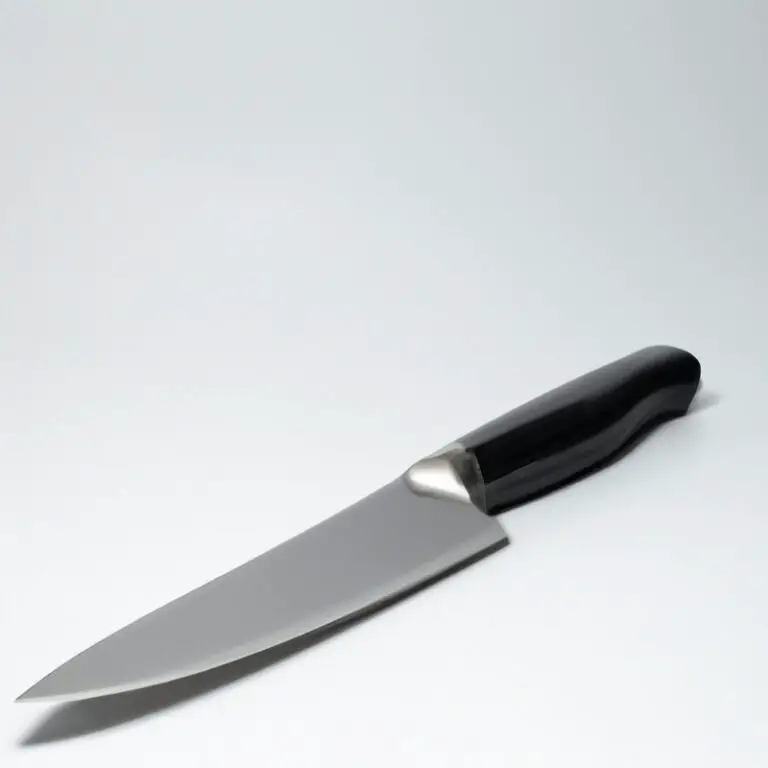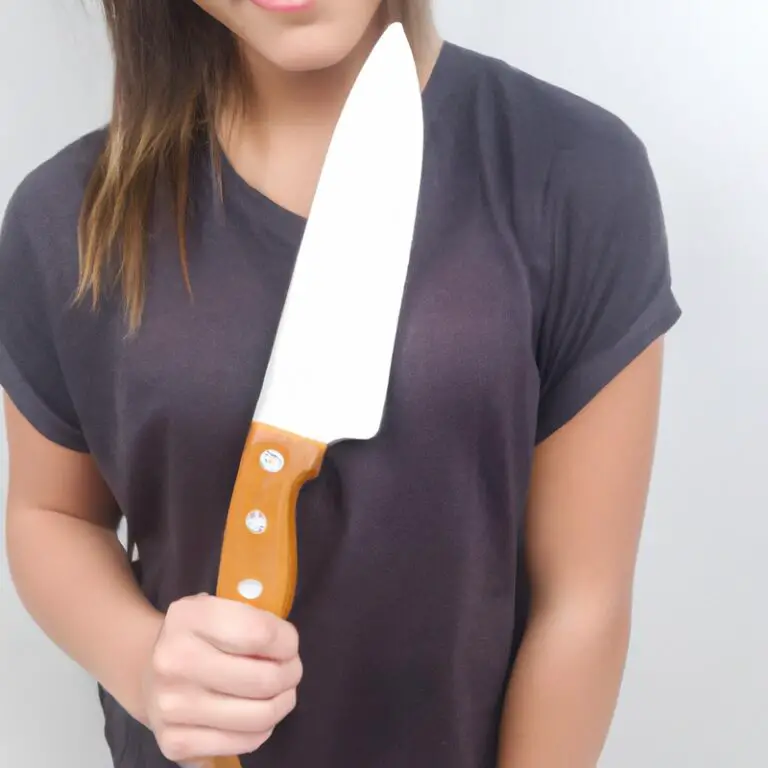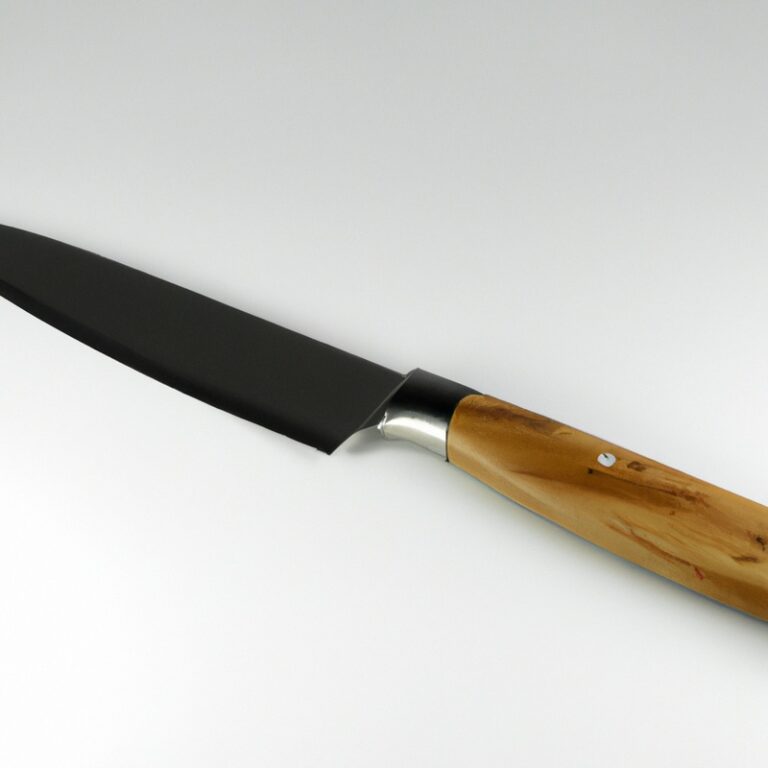How To Safely Clean a Chef Knife Without Damaging The Blade? Easy!
Key Takeaways:
- Never use a dishwasher to clean a chef knife as it can cause damage to the blade.
- Use a soft sponge or cloth with warm, soapy water to clean the knife and avoid harsh abrasives.
- Dry the knife immediately after cleaning to prevent rust and water damage to the blade.
- Consider investing in a specialized knife cleaner and honing tool to ensure the longevity and sharpness of your chef knife.
When it comes to preparing delicious meals, a chef knife is an essential tool in the kitchen. However, to ensure the longevity and sharpness of the blade, proper cleaning and maintenance are crucial.
But how can you clean your chef knife without damaging the blade?
As an experienced chef, I have come across this question numerous times. In this article, I will walk you through the step-by-step guide on safely cleaning your chef knife, along with the essential materials and best practices to keep your knife in tip-top shape.
| Method | Description |
|---|---|
| Hand washing | Wash the blade with warm water, mild soap, and a soft cloth. Rinse and dry. |
| Dishwasher | Not recommended due to potential damage from high heat and abrasive detergents. |
| Baking soda and water | Mix one tablespoon of baking soda with one cup of water. Dip a soft cloth in the mixture and gently scrub the blade. Rinse and dry. |
| Vinegar soak | Soak the blade in a 50/50 solution of white vinegar and water for a few minutes. Rinse and dry. |
| Lemon juice and salt | Make a paste of lemon juice and salt. Apply to the blade with a soft cloth. Rinse and dry. |
Understanding the blade: Anatomy of a Chef Knife
To understand how to clean a Chef Knife safely, it is important to have a basic understanding of the blade’s anatomy. A Chef Knife typically has a blade between 8-12 inches long, with a pointed tip and a curved edge.
The blade is made up of several parts, including the tip, edge, spine, bolster, and heel.
The tip is the pointy end of the blade, while the edge is the sharpened portion used for cutting and slicing. The spine is the opposite of the edge and runs along the top of the blade, while the heel is the widest and thickest part of the blade, usually used for chopping and slicing through thick cuts of meat.
The bolster is the thick, metal part that connects the blade to the handle and serves as a balance to the blade, providing a comfortable grip while cutting.
Understanding the various parts of a Chef Knife blade is essential to learning how to maintain and clean it effectively.
Materials needed for knife cleaning: Selecting the right tools
To effectively clean your chef knife without damaging the blade, you will need to select the right tools. Here are some materials you will need:
- Mild dish soap or detergent: Avoid using harsh or abrasive detergents that could scratch the blade.
- Soft sponge or cloth: Opt for a non-abrasive material to avoid damaging the blade.
- Cutting board scraper: Use a scraper to remove any food particles stuck to the blade.
- Microfiber towel or cloth: Dry the knife thoroughly after cleaning.
- Honing rod: Use a honing rod to maintain the sharpness of the blade.
- Mineral oil: Apply a thin layer of mineral oil to protect the blade from rust and corrosion.
Remember to use a separate cutting board for meat, poultry, and seafood to avoid cross-contamination. Also, avoid using a dishwasher to clean your chef knife as the machine can be harsh and damage the blade.
Cleaning the Chef Knife: Step-by-Step guide
Cleaning a Chef Knife: Step-by-Step Guide
- Wipe off any excess food or debris from the blade with a damp cloth or sponge.
- Apply a small amount of dish soap to the blade and rub it gently with a soft sponge or brush.
- Rinse the blade with warm water, making sure to remove all soap residue.
- Dry the blade with a clean towel or cloth, paying special attention to any hard-to-reach areas.
- Use a honing rod to realign the blade’s edge if necessary.
- Avoid placing the knife in the dishwasher or letting it soak in water for long periods.
Following these steps will help keep your chef knife clean and in top condition for years to come.
Best practices for cleaning a Chef Knife: Do’s and Don’ts
Best Practices for Cleaning a Chef Knife: Do’s and Don’ts Do’s:
- Always clean your knife immediately after use to prevent bacteria buildup.
- Use a sponge or cloth with mild soap and warm water to clean the blade.
- Rinse the knife thoroughly with warm water to remove any soap residue.
- Dry the blade with a clean towel or cloth after washing.
- Store the knife in a dry place away from moisture and open flames.
Don’ts:
- Avoid using abrasive sponges or cleaning materials that can scratch the blade.
- Do not soak the knife in water, as this can cause rust and damage to the handle.
- Never place the knife in a dishwasher, as the high temperatures can damage the blade and handle.
- Do not use bleach or harsh chemicals to clean the knife.
- Do not leave the knife in water for an extended period to avoid rust buildup.
Following these do’s and don’ts will help ensure that your chef knife remains sharp, hygienic, and in good condition for many years to come.
Tips for maintaining the sharpness of the blade
To maintain the sharpness of your chef knife, follow these tips:
- Sharpen the blade regularly, using a sharpening stone or honing rod before and after each use.
- Avoid using the knife on hard surfaces like granite or glass as it can dull the blade.
- Store the knife in a knife block or sheath to protect the blade when not in use.
- Use a cutting board made of wood or plastic that is smooth and easy on the blade.
- Always wash and dry the blade immediately after use to prevent rust and stains.
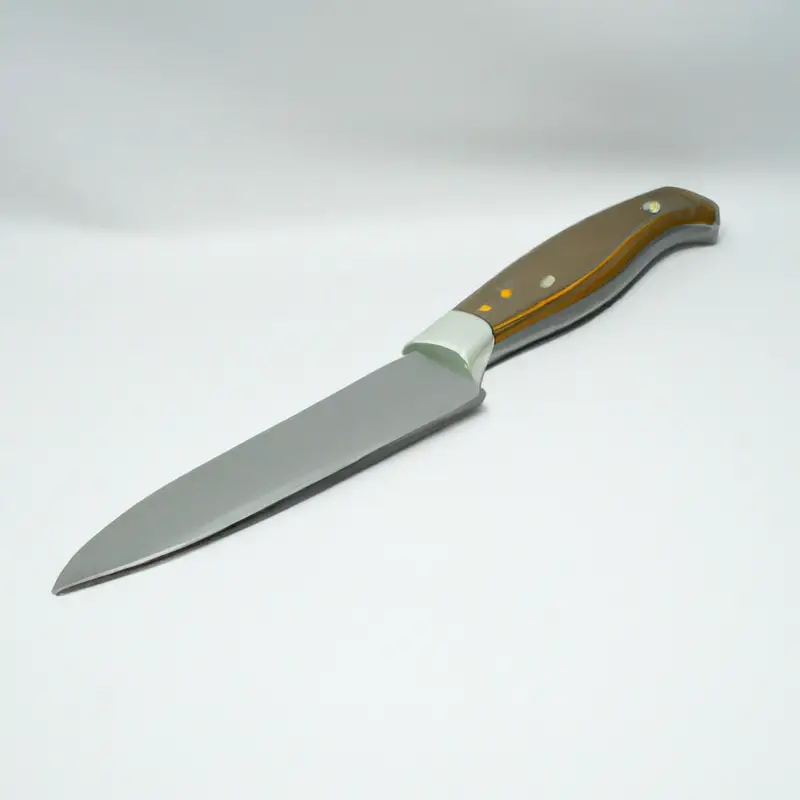
How often should you clean your Chef Knife?
It is recommended to clean your chef knife after every use to maintain its hygiene and prevent the buildup of bacteria. If you use your knife frequently, then cleaning it at the end of each day is a good practice.
However, if you are using the knife less often, it can be cleaned after every use.
It is essential to remember that acidic foods and ingredients can damage the blade, so it is crucial to clean the knife immediately after cutting them. Cleaning the knife regularly not only helps to keep it in good condition but also extends its lifespan.
How to remove stains from a Chef Knife Blade?
To remove stains from a Chef Knife Blade, you can use a mixture of baking soda and water or white vinegar and water. Soak the blade in the mixture for a few minutes, then gently scrub with a soft-bristled brush or sponge.
Rinse thoroughly with water and dry immediately.
Another option is to use a specialized metal cleaner, following the manufacturer’s instructions. Avoid using abrasive materials like steel wool or harsh chemicals that can damage the blade’s surface.
Additionally, it is crucial to prevent stains by wiping the blade after each use and avoiding contact with acidic or reactive substances.
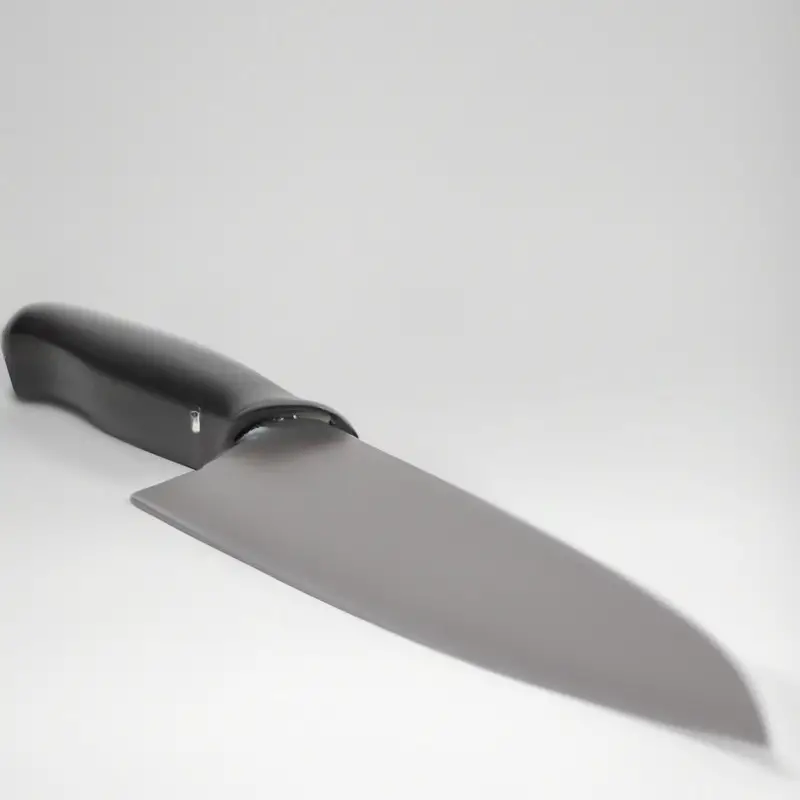
Cleaning the handle and bolster: What you need to know
Cleaning the Handle and Bolster: What You Need to Know The handle and bolster of a Chef Knife can accumulate dirt, grime, and bacteria, just like its blade. To clean the handle and bolster, you can use a soft sponge or cloth soaked in warm soapy water.
Avoid using abrasive cleaners or scouring pads that can scratch the surface or remove the finish.
Pay special attention to the area where the handle meets the blade, as this is a common spot for food particles and bacteria to accumulate. Use a toothbrush or a soft-bristled brush to gently scrub this area.
Dry the handle and bolster thoroughly with a clean towel to prevent water spots or potential rusting.
You can also use a food-grade oil or mineral oil to condition the handle and bolster after cleaning. Rub a small amount of oil onto the surface and wipe off any excess with a clean cloth.
Regular cleaning of the handle and bolster not only enhances the aesthetic appeal of your Chef Knife but also promotes hygiene and prolongs its lifespan.
The importance of drying the knife after cleaning
It is crucial to dry your chef knife after cleaning to prevent moisture buildup, which can lead to corrosion and rust. When a knife is wet, it creates an environment that promotes bacterial growth, which can cause food contamination.
Additionally, the moisture can damage the knife handle or even corrode the blade, decreasing its longevity.
To dry your chef knife, use a soft and clean towel to gently wipe the blade, handle, and bolster. Avoid air-drying as it may promote rusting.
Always store your chef knife in a dry place to maintain its sharpness and quality.
How to store your Chef Knife: Best practices for longevity
Proper storage of your chef knife is crucial to its longevity. Here are some best practices for storing your knife:
- Use a knife block: A knife block keeps your knife blade protected and prevents it from coming into contact with other objects that could damage it.
- Magnetic knife strip: A magnetic knife strip allows for easy access to your knives and keeps them off the counter, preventing any potential damage.
- Store in a sheath: If you don’t have a knife block or magnetic strip, storing your knife in a sheath will also protect the blade from damage.
- Keep the blade dry: Make sure the blade is completely dry before storing. Moisture can cause corrosion and damage the blade.
- Store in a cool, dry place: Avoid storing your knife in a humid environment as it can also lead to corrosion.
Following these best practices can help ensure that your chef knife is stored properly and maintains its longevity.
Final Verdict
Cleaning a chef knife is an important task that should not be taken lightly. It’s crucial to understand the anatomy of the knife, and use the right tools and techniques to safeguard its longevity.
By following the step-by-step guide, you can ensure that your knife stays sharp and safe for use.
Remember to avoid using harsh chemicals or abrasive materials on the blade, and always dry it thoroughly before storage. With these best practices, you can maintain your chef knife’s optimal performance and reliability.
So go ahead and put these tips into practice to keep your chef knife spotlessly clean, always ready to use, and make a lasting impression on your guests.

